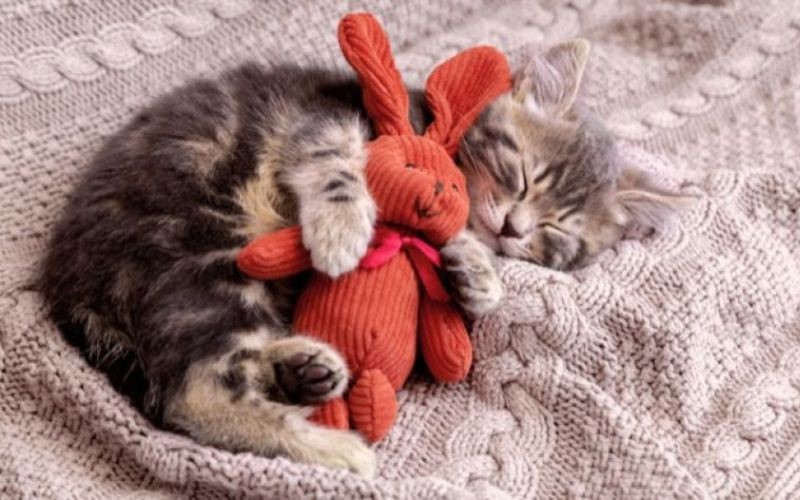
Playtime with the kitten
Kittens love playingPlaying behavior starts to appear around the 3rd week of the kitten's life. The little one moves the entire body or a paw for no reason and watches what happens with amazement. Games that involve objects, on the other hand, become more and more frequent from the 3rd week of life. For example, a piece of paper can be hit with a paw, thrown and picked up, pushed and grabbed with the mouth, caught after a leap or chased down like a real hunter! After the 4th week, the kitten begins playing with the mother and other siblings. The kittens grab the mother’s tail, race against each other, stand up facing each other or engage in a playful fight. The little one, by playing, develops the muscular system, improves coordination, improves sensory skills (such as sight and touch), and learns to communicate.Choosing the right Cat Toys
Paper or rubber balls, corks or plastic, objects covered with fabric or feathers, nuts or hazelnuts, pine cones and sticks allow the little feline to practice hunting. It is necessary to collect the toys in a container such as a cardboard box (shoebox size). The kitten will use them and scatter them everywhere. The Pet Parent should put them back in their place every day! To prevent the kitten from getting bored, I recommend periodically adding new toys and removing other older ones since inserting new objects stimulates interestPlaying together: how do you play with a cat?
The playful activities that the kitten carries out with the Pet Parents are crucial for developing a strong bond. Games that involve the kitten’s participation in daily family activities and collaborative games in which we have fun together are strongly encouraged. Allowing the kitten to choose what he likes most allows the Pet Parents to understand the tastes and preferences of the little one. Here's what to do:
- Involve the kitten when cleaning the house during common chores such as changing the sheets, mopping the floor, dusting, emptying a closet, or even assembling a piece of furniture.
- The objects that surround us inside the home can be transformed into obstacles. The cat can climb on or pass under a chair or slalom between the legs of the table.
- Fill a cardboard box (the size of a shoebox) with at least two layers of balls made of white notebook paper and hide a toy mouse inside so that the little cat can find it as if it were hunting.
- Build a paper plane and challenge the kitten to catch it while in the air.
- Stimulate the little feline's enigmatic intelligence by proposing some simple puzzles, such as hiding a fabric mouse or a prize under a transparent plastic coffee cup.

